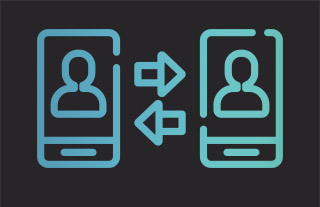P2P
The acronym P2P has become quite common over time, and a large percentage of internet users have come across this term. You may have heard it from someone who just downloaded a movie from a given platform or read about it in the news, and you are wondering what the fuss is all about. Well, P2P which is short for peer to peer is an entirely exciting topic and here are some facts that you should know about this term.

Brief overview
The term P2P refers to computer systems which make use of a shared architecture. In this system, the computers go by the term peers, and they all have the same standing such that none is superior to the other. The users in the system can share files, and all this takes place without a central point to oversee the activities. You can look at this system in a socialist view such that all peers are equal to each other and they all have the same responsibilities. In this way, a peer acts as both a client to the other peers and a server to them at the same time. Resources available in such systems get shared amongst the users, and they include items such as storage space and processor usage.
The use of these systems
The primary foundation of this system is that computers get to work together towards the accomplishment of given tasks. Take an example of the sharing of files on the internet using a site such as BitTorrent. Where a person is busy downloading a movie from the system, they also get to share the data as it downloads with another interested party. This sharing is possible because as a user receives bits of the file, these can get sent out to other computers on the system.
All these activities take place simultaneously, and this makes the system very efficient concerning cost and time savings.
This form of sharing is entirely different from that in a website where the activities take place on a one-way basis such that you must first download before sharing the file.

The need for these systems
Many characteristics make these systems valuable in our day to day activities. To start with, they are not easy to shut down. If one were to stop the actions of one peer in the downloading of a file, the other peers would pitch in and complete the task with ease. As such, to get the activities to come to an end, one would have to shut down all the peers, which is a difficult task. The addition of other computers to the system is straightforward as there is no central force to oversee the activities. This lack of control makes it easy for many computers to interact and makes it easy for users all over the world to gain access to files on the net.
Another thing about these systems is that they offer speed. If a file is available on many computers in a system, the easier it becomes for an interested party to download it. They are also very cheap to configure and are thus an economical solution to the need for central points.
Though there is a lot of contention surrounding the impact of these systems on the infringement of copyrights, users can agree that the sharing of files has become more efficient, thanks to the system.
